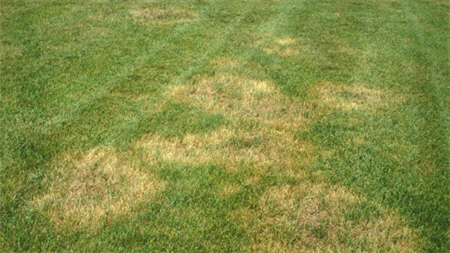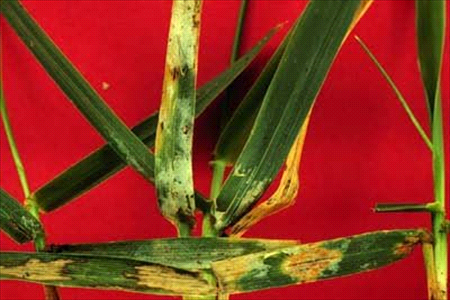Your Cart

LEARN YOUR LAWN: BROWN PATCH
Request a Quote
Brown Patch is a leaf disease that can appear on your lawn during periods of hot and humid weather. It will often appear first as rough, circular patches varying in size, from a few inches to several feet across. In the early morning dew, you may notice something that looks like purple or grayish-brown cobwebs; this is actually fungal growth. Brown patch is caused by the Rhizoctonia fungi, which infects the grass foliage and crowns. This fungus colonizes the organic matter in the thatch layer, and, during times of stressful conditions, can cause disease in the grass plant. Brown patch is likely to develop in cool season grasses when temperatures are above 29°C with high relative humidity. While the disease rarely causes damage to Kentucky Bluegrass, it can cause significant damage to Tall Fescue, Perennial Ryegrass, and Creeping Bentgrass. Brown Patch is very difficult to control, as it thrives in hot and humid weather conditions. In most cases, the spread of the disease will be reduced by changes in temperature and weather, but you can also adjust some cultural practices to improve the health of the lawn and limit the spread. However, depending on the size of the infestation and the scope of the damage, other forms of control may be necessary and you may need to repair heavily damaged areas with sod or the appropriate grass seed. A thick, healthy, well-maintained lawn is the best line of defense. Here’s how you can adjust your beneficial cultural practices to reduce the spread of Brown Patch: Avoid Watering: Under normal circumstances, you should be watering each area of your lawn for 30-45 minutes, twice per week, in the early morning so the turf is dry by nightfall. However, you should avoid watering when the disease is active, as it thrives with moisture. Avoid Mowing: You should avoid mowing when the disease is active. If you do have to mow, make sure your mower blade is razor sharp, so that the blade does not fray the tips of the grass, spreading the disease. Maintain a regular mowing schedule throughout the growing season. In general, you should keep your lawn between 2 ½ and 3 ½ inches high, but during the hottest weeks of summer, you may allow the grass to grow as high as 4 inches. Never remove more than ⅓ of the grass blade at each mowing. Fertilize Regularly: Regular applications of Weed Man’s specially formulated, slow-release granular fertilizer will help provide your lawn with adequate nutrients. These applications are timed specifically to avoid over fertilizing the lawn. Core Aeration: Aerating your lawn can improve soil drainage and help reduce the likelihood of lawn diseases. This will also alleviate soil compaction and allow water and nutrients to penetrate deeper into the soil. Your local Weed Man professional may be able to offer other solutions and recommend the best form of treatment that is available to improve the conditions of your lawn.What is Brown Patch?
How Can I Control Brown Patch In My Lawn?
 English (USA)
English (USA) Français (CANADA)
Français (CANADA)

